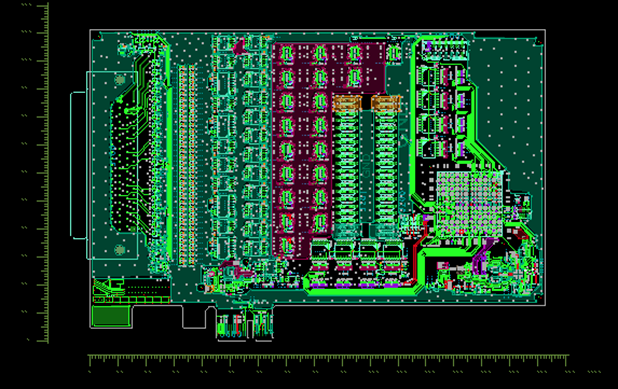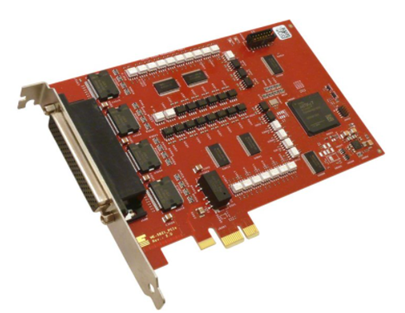18 GHz HF board. And this year we're doing even more challenging
Consilia offers solutions in hardware, software, FPGA (field programmable gate array), DSP (digital signal processor) and RF (radio frequency). We do individual parts of development or turnkey development of the entire device. Industrial, automotive, aerospace. Each sector has its own specifics, of course. In some places miniaturization is required, whereas for some automotive designs robustness is still extremely important and two- or four-layer boards remain the basis. For RF, you need to use high-frequency materials. Generally speaking, circuit boards are already in every lamp. It's almost never just an ordinary bulb and switch anymore, but also some electronics that accompany them," adds Petr Horák.
We're all looking at how to push the limits
While information technology is characterised by rapid development and constant changes in trends, the development of printed circuit boards is much slower. "In general, miniaturisation and the specific requirements for high-frequency designs and materials are being addressed. Limits (especially physical and material ones) tend to be given and development proceeds slowly by pushing them. Based on what is possible, designs are modified to the edge of the impossible," says the graduate in mechatronics from the Technical University in Brno, who most appreciates the diversity of projects and customers at Consilia."
At the moment, for example, we are working on a project for really complex RF boards with extremely high frequencies. Last year we successfully realised boards where the frequencies were up to 18 GHz. The customer was satisfied, so now we are working on an even more complex and intricate design. The PCBs just in the base, without any assembly, cost hundreds to thousands of euros, because there are extraordinary demands on high frequency parameters and processing quality. But this is an exception, and of course we also make a number of prototype boards available," says Petr Horák.

Raw material crisis? We are looking for where we can
"The raw material crisis has hit us hard. First of all, there is a shortage of material for the boards themselves, and also of parts for mounting the boards. It happens to us that we get a quote on Monday and by Tuesday some components are already unavailable. We have a long-standing reliable supplier in Austria, but for one of our last orders they told us that they were able to stock the material in twenty weeks, so we had to start looking for other untested suppliers and take a bit of a risk to see if they could handle it or not," says Petr Horák.
"As a Brno-based company, we try to favour regional suppliers and manufacturers, because communication is always easier there. For example, we cooperate with Gatema, which we use mainly for prototype boards and smaller series, or to make various test boards. The big advantage is that it's really fast and, especially for boards up to six or eight layers, it's accommodating and there's no problem to agree anything with them. For more complex designs, we have to look abroad for products. Kubatronik in Germany, for example, offers the choice of materials or technologies that we need for our most demanding layouts," concludes the PCB Design Engineer.

Connect with our specialists